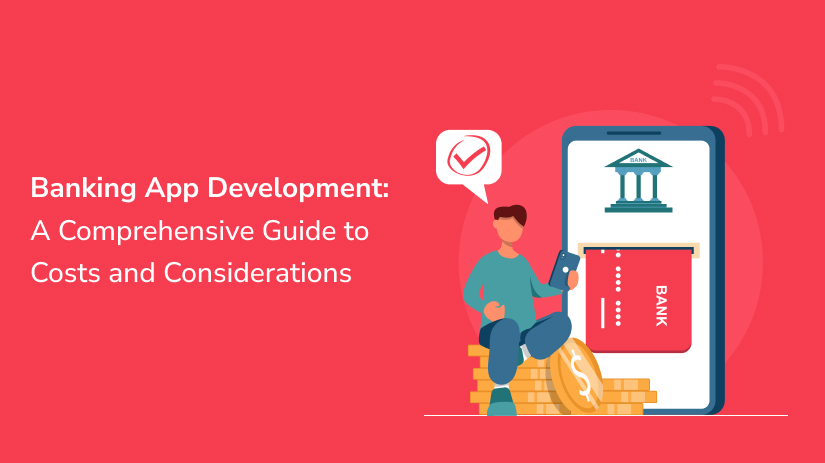In the digital age, banking applications have become a cornerstone of financial services, offering convenience and efficiency to users worldwide. As more banks and financial institutions move online, understanding the intricacies of banking app development becomes crucial.
This guide will delve into the costs, considerations, and steps involved in developing a robust banking application.
Understanding Banking Software Development
Banking software development is a specialized field that focuses on creating secure, user-friendly, and efficient applications for financial institutions. These applications range from mobile banking apps to complex systems for managing financial transactions and customer data.
The development process requires a thorough understanding of financial regulations, security protocols, and user experience design.
Connect with us for Fintech Development Needs
Trusted by companies like Plaid, Yodlee, Codat.
Key Considerations in Banking Application Development
When embarking on banking application development, several key considerations must be addressed to ensure the final product meets industry standards and user expectations.
1. Security and Compliance
Security is paramount in banking application development. Financial data is highly sensitive, and any breach can lead to severe consequences.
Developers must implement robust security measures, including encryption, multi-factor authentication, and secure APIs. Compliance with regulations such as GDPR, PSD2, and AML is also essential to avoid legal issues and build user trust.
2. User Experience (UX) Design
A seamless user experience is critical for the success of any banking app. The application should be intuitive, easy to navigate, and accessible to users of all tech-savviness levels. Investing in professional UX design can significantly enhance customer satisfaction and retention.
3. Scalability and Performance
As the user base grows, the banking app must scale efficiently without compromising performance. Choosing the right technology stack and infrastructure is crucial. For instance, partnering with a ruby on rails consulting agency can provide scalable and high-performing solutions tailored to your needs.
Steps in Developing a Banking App
1. Research and Planning
Start with thorough market research to understand user needs, competitor offerings, and regulatory requirements. Define the core features and functionalities of your banking app.
2. Choosing the Technology Stack
Select a technology stack that ensures security, scalability, and performance. Popular choices include Ruby on Rails, known for its robustness and efficiency, especially when guided by a specialized ruby on rails consulting agency.
3. Design and Prototyping
Develop wireframes and prototypes to visualize the app’s interface and user flow. This phase includes detailed UX and UI design to ensure the app is user-friendly and visually appealing.
4. Development
The development phase involves coding the application, integrating third-party services, and ensuring all functionalities work seamlessly. Regular testing during this phase is crucial to identify and fix issues early.
5. Testing and QA
Thorough testing is essential to ensure the app’s security, performance, and usability. This includes unit testing, integration testing, and user acceptance testing.
6. Deployment and Maintenance
Once the app passes all tests, it’s ready for deployment. Post-launch, continuous monitoring and maintenance are necessary to keep the app updated, secure, and efficient.
Connect with us for Fintech Development Needs
Trusted by companies like Plaid, Yodlee, Codat.
Costs Involved in Banking App Development
The cost of banking app development can vary widely based on several factors:
1. Complexity and Features
The more complex the app and the more features it has, the higher the development cost. Basic apps with essential banking functions are cheaper to develop than sophisticated apps with advanced features like AI-driven analytics, blockchain integration, or multi-currency support.
2. Development Team
Hiring a skilled development team is crucial. Costs can vary based on location, expertise, and the agency’s reputation. Working with a specialized ruby on rails consulting agency can sometimes be more cost-effective and provide better results.
3. Technology and Tools
The choice of technology stack and development tools also impacts the cost. High-quality tools and technologies ensure better performance and security but can be more expensive.
4. Compliance and Security Measures
Investing in advanced security measures and ensuring compliance with financial regulations can add to the development costs. However, this is non-negotiable for banking applications.
5. Ongoing Maintenance and Updates
Post-launch maintenance, updates, and customer support are continuous expenses. Ensuring your app stays updated with the latest features and security patches is essential for long-term success.
Conclusion
Banking app development is a complex yet rewarding endeavor that requires careful planning, the right technology, and a focus on security and user experience.
By understanding the costs and considerations involved, financial institutions can develop effective and secure banking applications that meet the needs of their users and stay ahead in the competitive market.
Whether you’re looking to develop a new banking app or upgrade an existing one, working with experienced professionals and a reliable ruby on rails consulting agency can make a significant difference in the quality and success of your project.
Additionally, incorporating complementary solutions like donation collection software can expand the app’s functionality, catering to a broader audience and enhancing its value proposition.
Connect with us for Fintech Development Needs
Trusted by companies like Plaid, Yodlee, Codat.





